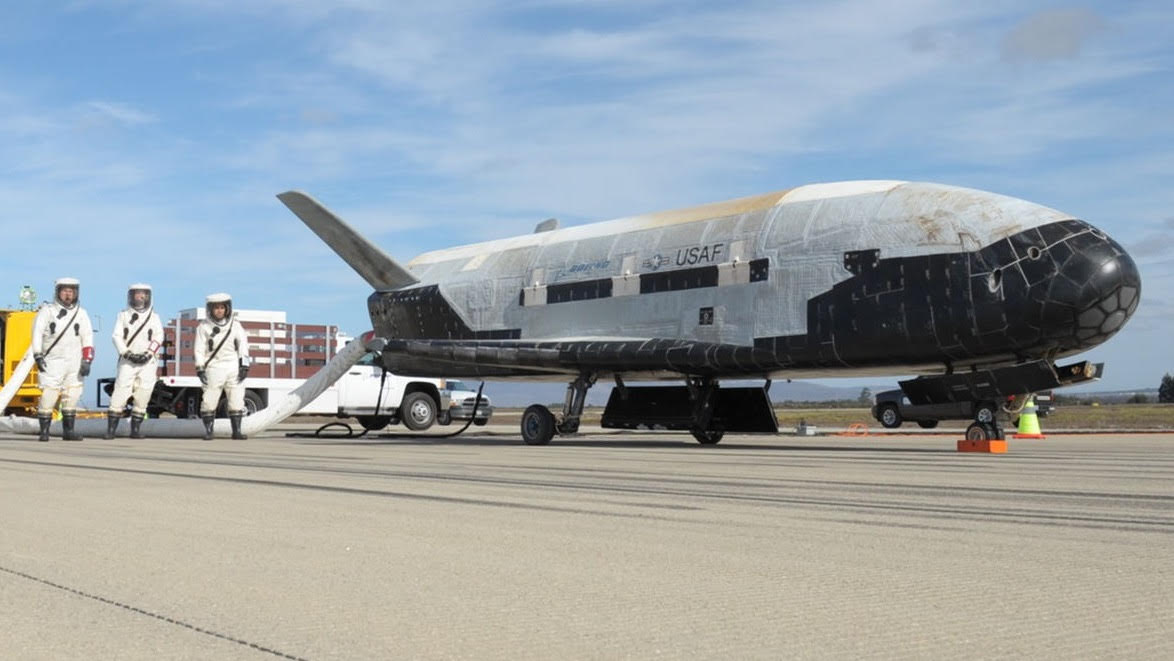CAPE CANAVERAL, Fla. — The U.S. Air Force uncrewed space shuttle lifted-off from the Kennedy Space Center on Thursday to begin a fifth classified mission to test and develop new technologies for future space craft.
The autonomous Boeing-built X-37B orbital test vehicle will spend over one year in a low Earth orbit at around 500 miles in altitude. The flight will build upon the programs four previous long duration missions.
Thursday’s launch marked the first time commercial launch company SpaceX’s Falcon 9 rocket delivered an X-37B into orbit. Previously, United Launch Alliance’s Atlas V delivered the first four missions into space.
Under sunny skies, the Falcon 9’s nine Merlin engines ignited as the countdown clock reached zero to lift-off on time at 10:00 a.m. EDT. Seconds later, the white rocket and it’s historic military payload enclosed in a protective payload cleared the tower of it’s seaside launch pad and began to dart out over the Atlantic waters.
The delta-winged spacecraft, which resembles a smaller version of NASA’s space shuttle orbiters, launched from historic pad 39-A — the same pad as the Apollo moon missions and shuttle flights of yesteryear.
The launch began exactly four months after the conclusion of the fourth test flight which lasted 718 days in space. All combined, the four previous missions have logged 2,085 days in low Earth orbit. Mission five’s unknown duration may have it stay in orbit for up to two years.
“This mission carries small satellite ride shares and will demonstrate greater opportunities for rapid space access and on-orbit testing of emerging space technologies,” the Air Force said in a statement issued this week. “Building upon the fourth mission and previous collaboration with experiment partners, this mission will host the Air Force Research Laboratory Advanced Structurally Embedded Thermal Spreader payload to test experimental electronics and oscillating heat pipe technologies in the long duration space environment.”

Two and one-half minutes into the flight, the Falcon’s first stage separated, and the second stage took over the ascent portion to place the space plane in its proper orbit.
As the X-37B was carried into orbit by the upper stage, the newly spent first stage began its controlled journey back to America’s Space Coast. A series of burns by the stage positioned the empty casing to successfully touchdown upright upon its landing legs eight minutes following launch.
Following an undisclosed flight time, the space plane is expected to touchdown no earlier than 2019 at its prime landing site in Florida. Once the Air Force sends commands to bring the reusable space plane home, it will reenter just like NASA’s space shuttle, and aim for a touchdown at Kennedy’s Shuttle Landing Facility runway.

Once the landing command is given, the space plane will automatically maneuver for reentry into the atmosphere with a nose-up angle. There will not be anyone on the ground with a joystick flying the X-37B. If weather or technical issues occurs on the day it returns, Edwards, AFB in California could be called up as a back-up site with it’s longer runway.
(Charles Atkeison reports on aerospace and technology. Follow his updates via social media @Military_Flight.)
